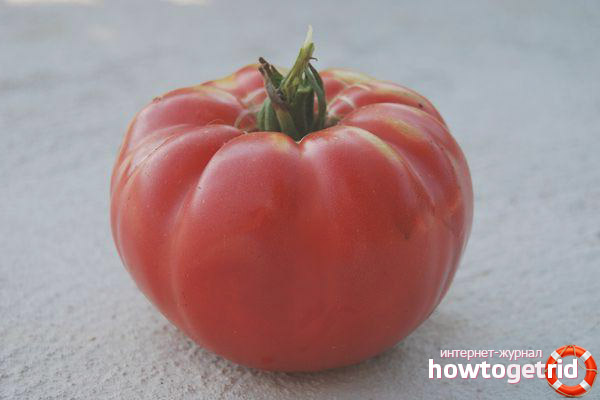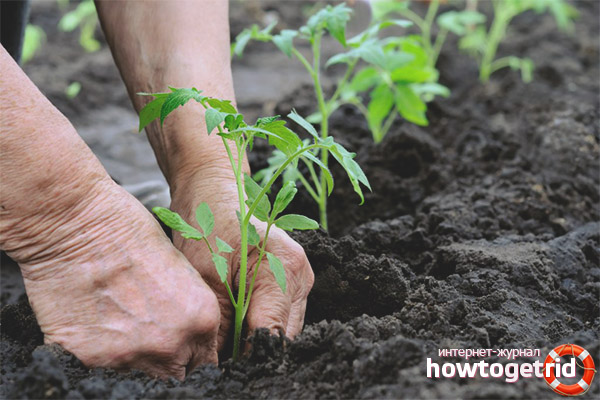The content of the article
Today, domestic producers offer gardeners to get acquainted with a new indeterminate tomato variety called Dacosta Portuguese. This variety is great for growing in the regions of central Russia, demonstrates high yields in good weather conditions and with proper care. Some summer residents who came across these tomatoes speak of him only in a positive way and claim that they have not tasted more delicious and fleshy tomatoes. The fruits ripen late enough and look much larger compared to other varieties.
The structure and description of tomato
For the first time, the Portuguese Dacosta was grown in Portugal, and from there the seeds came to Europe and Russia. In greenhouses, bushes are able to reach a length of the order of 1.5-2 m, so the variety belongs to the group of tall tomatoes. About 5 kg of fruit can be collected from each bush. Dacosta belongs to mid-season round tomatoes. The surface of the fruit is ribbed or flat, color pink or pale red. The vegetables are juicy, fleshy, with thin peels and sweetish flesh. The mass of one ripe tomato is from 400 to 800 g. Tomatoes are used to make tomato paste or juices. They are perfectly combined with other ingredients in salads, suitable for canning or fresh cuts.
When the stems begin to form, the plant needs a garter, since heavy fruits during ripening can break them. Bushes with two or three strong and healthy stems give the largest crop.
Note! Dacosta Portuguese is resistant to a number of serious diseases. Spores of late blight, gray or apical rot, macrosporiosis rarely affect the leaves and stems of the plant.
The color of the fruit is a deep pink, the surface is round. If the fruit grows too large, tubercles form on it. There is a slight acidity, but in general, the taste is practically no different from other indeterminate varieties. Sauces made from tomato raw materials will be a wonderful addition to any dishes and snacks.
Growing requirements
Before starting planting, they are engaged in germinating seeds for seedlings. When a pair of true leaves is formed, the seedlings are transferred to separate containers filled with a nutrient substrate. In order for the plant to quickly adapt to fresh air, the seedlings are quenched daily for a week.
Landing rules
- Planting seedlings in greenhouses is carried out in May.
- Garter and pinching of seedlings is done as needed. It is important to leave 2-3 stepson so that the fruits begin to develop.
- The Portuguese Dacosta variety grows better if you periodically pick off excess foliage from the bushes. Such events are recommended during the day when the sun is shining. Only one pair of leaflets is cut off at a time.
- During the season, organic and mineral dressings are organized to make the fruits more juicy and tasty.
- An important condition for growing is regular weeding and loosening of the soil. Only in this case will it be possible to achieve a high-quality and plentiful crop.
- Watering should be moderate, otherwise the vegetables will lose their taste and become acidic. When watering, they try to make water directly under the root. If moisture gets on the leaves, the plant may get burned.
Grade assessment by experienced summer residents
Despite the recent emergence of the Dacosta Portuguese variety on the Russian market, he managed to gain favor with sophisticated gardeners. Many of them give preference to this variety because of the high yield and decent taste. Perhaps the large weight and size of the fruit will be a little perplexing for summer residents who have not yet encountered such tomatoes. However, this fact does not in any way affect the taste of the tomato.
Some summer residents have noticed that vegetables become less sweet if the rainy summer comes out. The variety does not tolerate excessive moisture, and also does not treat drought and hot weather badly.
Video: Portuguese Dacosta Tomatoes











Submit